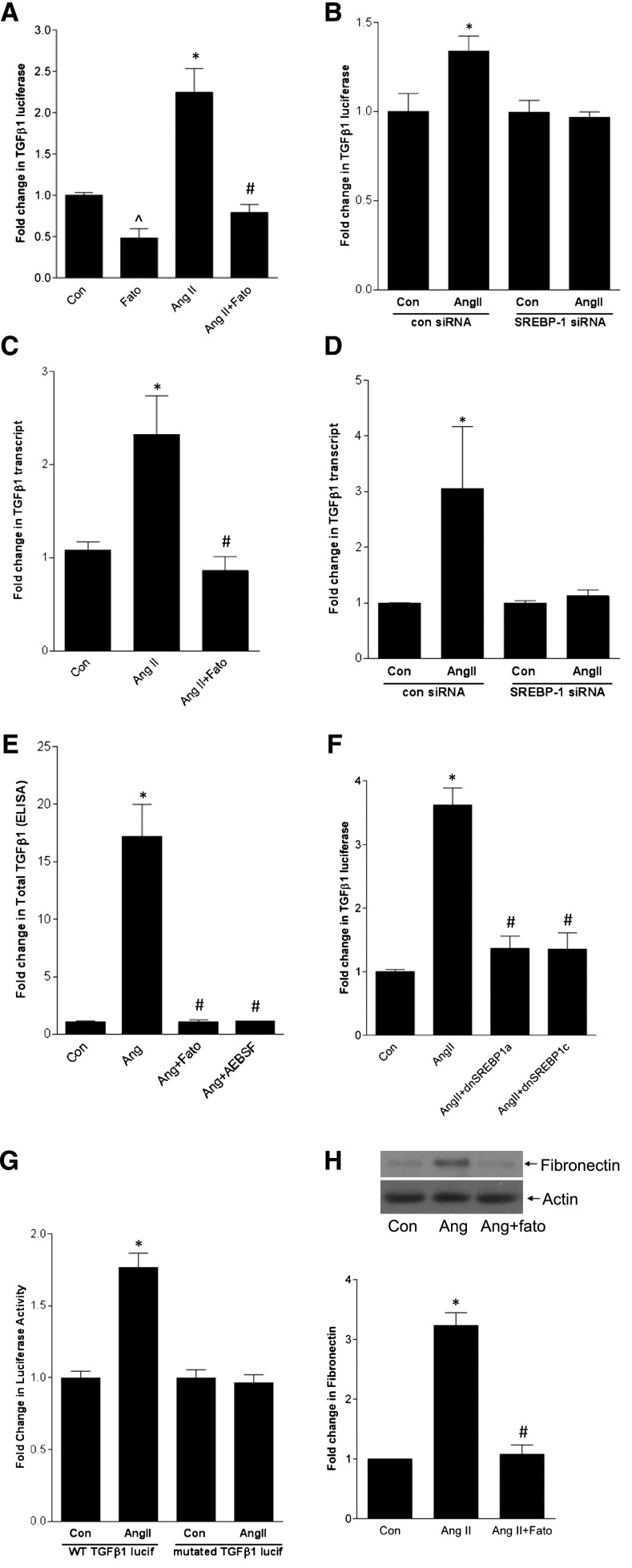Figure 6.
SREBP-1 mediates AngII induction of TGF-β1 and downstream fibronectin upregulation. MCs were treated with AngII for 24 hours. (A) AngII-induced activation of a transfected TGF-β1 promoter-luciferase construct was inhibited by fatostatin (20 µM, 4 hours) (∧P<0.001 versus Ang, *P<0.001 versus con, #P<0.001 versus Ang, n=9). (B) Transfection of MCs with SREBP-1 sRNA prevented AngII-induced activation of the TGF-β1 promoter-luciferase construct compared with control siRNA (*P<0.05 versus control, n=3). (C) Fatostatin inhibited AngII-induced upregulation of the TGF-β1 transcript (*P<0.01 versus con, #P<0.01 versus Ang, n=6). (D) SREBP-1 siRNA also prevented TGF-β1 transcript upregulation by AngII (*P<0.05 versus con, n=3). (E) Both fatostatin and the S1P inhibitor AEBSF (500 µM, 1 hour) prevented AngII-induced TGF-β1 secretion into the medium as assessed by ELISA (*P<0.001 versus con, #P<0.001 versus Ang, n=4). (F) Transfection of MCs with dominant negative SREBP-1a (dnSREBP1a) or -1c prevented AngII-induced TGF-β1 promoter-luciferase activation. Con and AngII groups were transfected with the empty vector pcDNA (*P<0.001 versus con, #P<0.001 versus Ang, n=9). (G) Deletion of the SREBP-1 binding site in the TGF-β1 promoter-luciferase construct prevented its activation by AngII (‡P<0.001 AngII versus con, n=6). (H) Fatostatin inhibited AngII-induced upregulation of fibronectin (*P<0.001 versus con, #P<0.001 versus Ang, n=5). WT, wild type.

